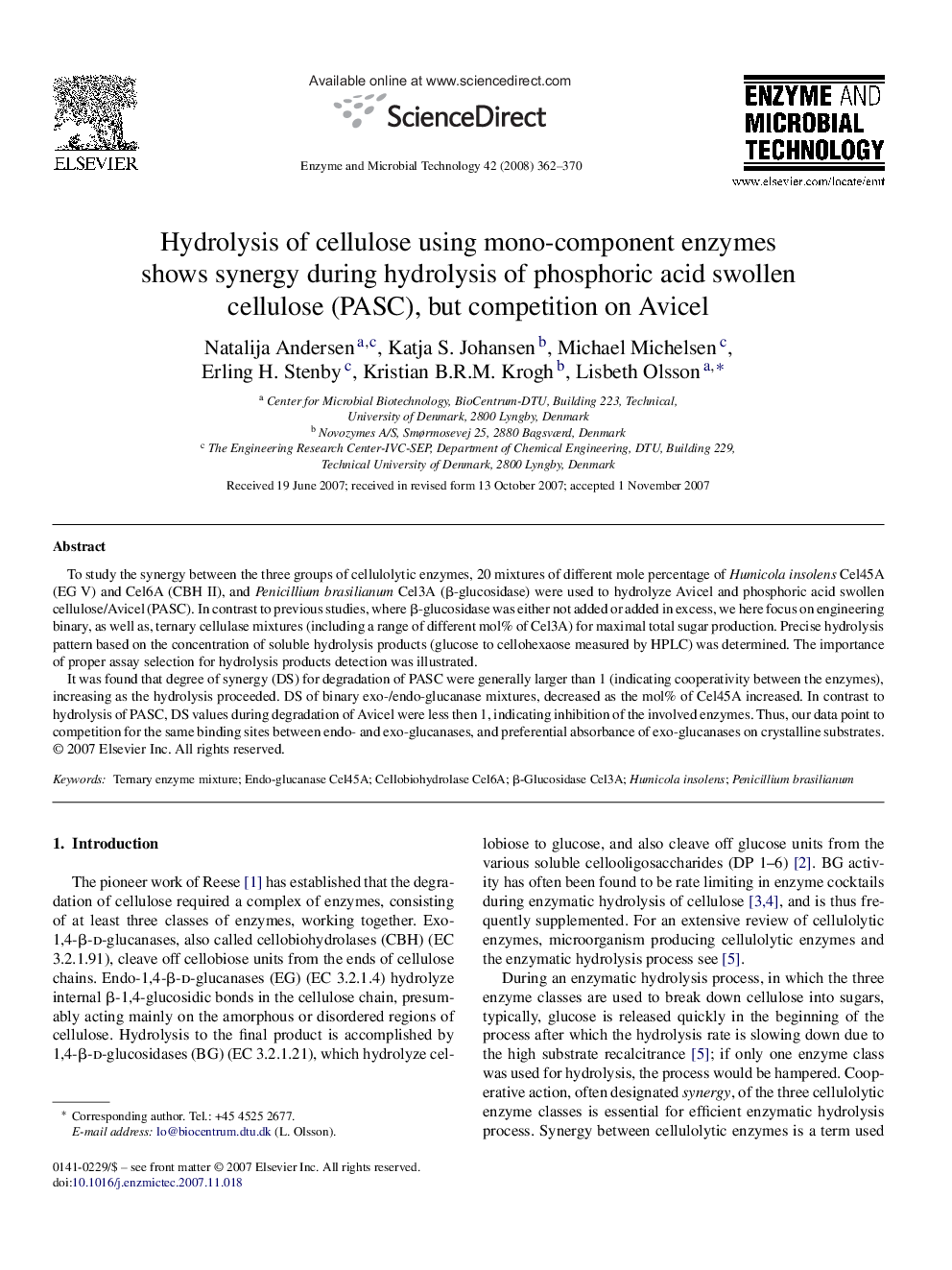| Article ID | Journal | Published Year | Pages | File Type |
|---|---|---|---|---|
| 18272 | Enzyme and Microbial Technology | 2008 | 9 Pages |
To study the synergy between the three groups of cellulolytic enzymes, 20 mixtures of different mole percentage of Humicola insolens Cel45A (EG V) and Cel6A (CBH II), and Penicillium brasilianum Cel3A (β-glucosidase) were used to hydrolyze Avicel and phosphoric acid swollen cellulose/Avicel (PASC). In contrast to previous studies, where β-glucosidase was either not added or added in excess, we here focus on engineering binary, as well as, ternary cellulase mixtures (including a range of different mol% of Cel3A) for maximal total sugar production. Precise hydrolysis pattern based on the concentration of soluble hydrolysis products (glucose to cellohexaose measured by HPLC) was determined. The importance of proper assay selection for hydrolysis products detection was illustrated.It was found that degree of synergy (DS) for degradation of PASC were generally larger than 1 (indicating cooperativity between the enzymes), increasing as the hydrolysis proceeded. DS of binary exo-/endo-glucanase mixtures, decreased as the mol% of Cel45A increased. In contrast to hydrolysis of PASC, DS values during degradation of Avicel were less then 1, indicating inhibition of the involved enzymes. Thus, our data point to competition for the same binding sites between endo- and exo-glucanases, and preferential absorbance of exo-glucanases on crystalline substrates.
